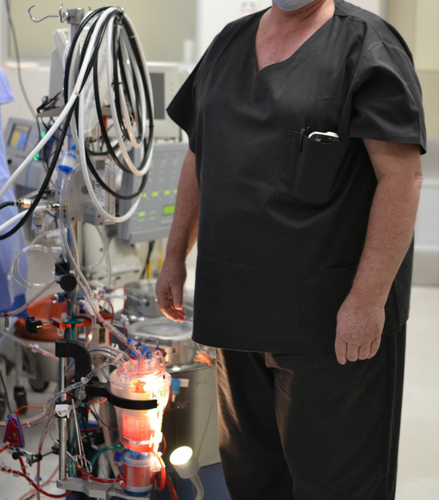Inside the Profession of Perfusion
- Maboneng Heart & Lung Institute
- Dec 6, 2017
- 2 min read

The surgical lights come on and the chest is opened to reveal a beating heart. The perfusionist is standing, ready and waiting, at the heart-lung machine: a machine capable of taking over the function of the heart and lungs, calming the heart to a still position to allow for surgical repair. Eddy Zwicky has been practicing as a perfusionist for 33 years. A gentle giant who feels the weight and significance of his job far beyond the confines of the operating room. “A friend took me to Baragwanath Hospital in 1978... I was in matric. As soon as I saw [the heart-lung machine] I knew that was what I wanted to do; I loved it, and I never thought of anything else after that.” After a lengthy period of technological and medicine advancements, the first successful use of the heart-lung machine during an open-heart surgery was performed in 1953 by John Gibbon in the USA. It is from this point in surgical history that the iron heart developed into what it is today and gave rise to the perfusion profession, which altered the surgery room and the possibilities that lay hidden within them. A career solely and exclusively linked with cardiothoracic surgery, perfusionists work most closely with the anaesthetist in theatre, managing the metabolic and physiological needs of the patient. The roles and responsibilities of the perfusionist give the cardiac surgeon freedom to focus primarily on the surgery repair and less on the immediate needs of the patient, namely blood and oxygen flow through the body. “We don’t continuously bounce things off each other… only if we’re going off our normal path,” Eddy confirms. The average open-heart surgery lasts three to four hours, during which the perfusionist is in complete matrimony with the machine. “The toughest part is just hoping something doesn’t go wrong and being prepared for it if it does,” explains Eddy, “it’s like flying a plane. If something goes wrong, it’s going to go wrong. You’ve just got to anticipate problems: with communication and just thinking ahead.” The unforeseeable reality belonging to the heart-lung machine, in terms of unlikely disposable failure (of the oxygenator) or a rare mechanical failure, explains the calm and professional dynamic that flows between the cardiothoracic surgeon, the anaesthetist and the perfusionist, in an environment strife with pressure and a stress strong enough to derail success. “You’ve got to have open communication with each other,” says Eddy, “you’ve just got to focus. Keep focused all the time… accidents can happen quickly.”

“What could go wrong is beyond your control, but it’s still your responsibility,” says a humble Eddy. “You just check and check and check; you can’t check enough.” More about the functionality of the heart-lung machine in an article to follow.
© Maboneng Heart and Lung Institute 2017 | Featured Image: Malaika Boon






















































Comments